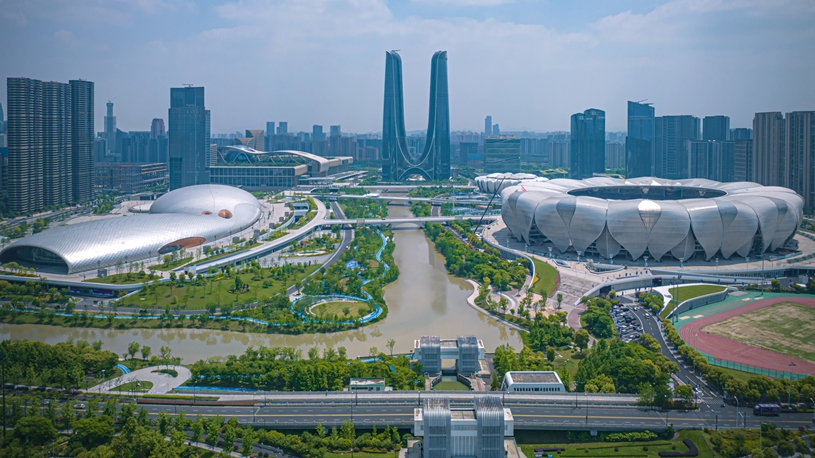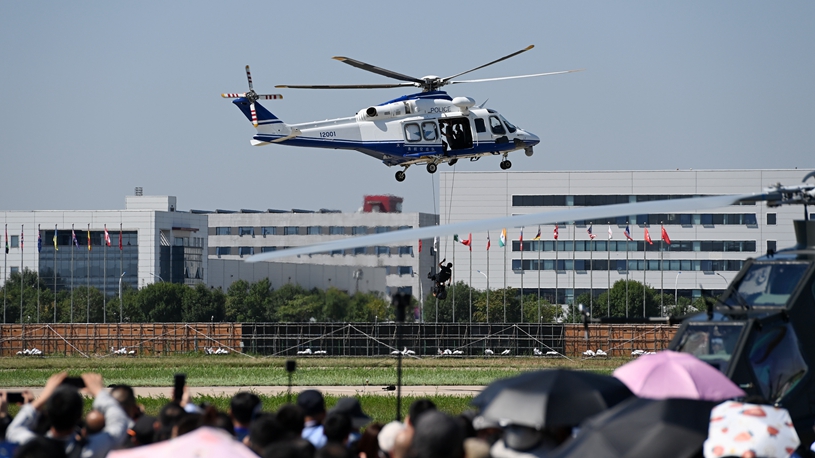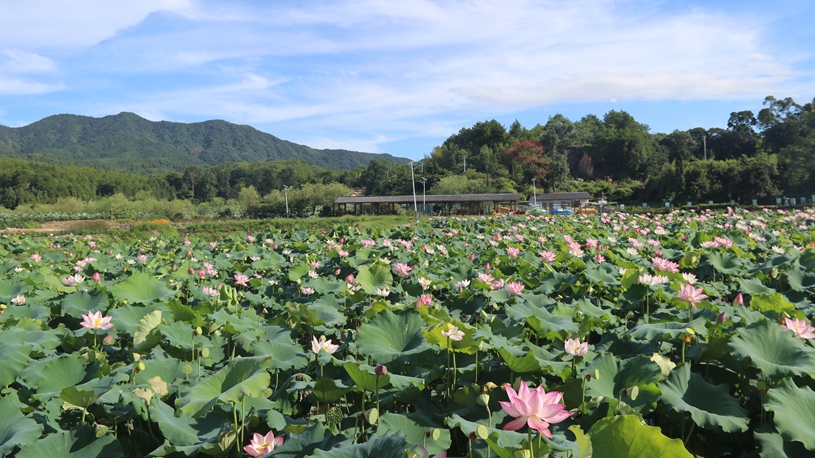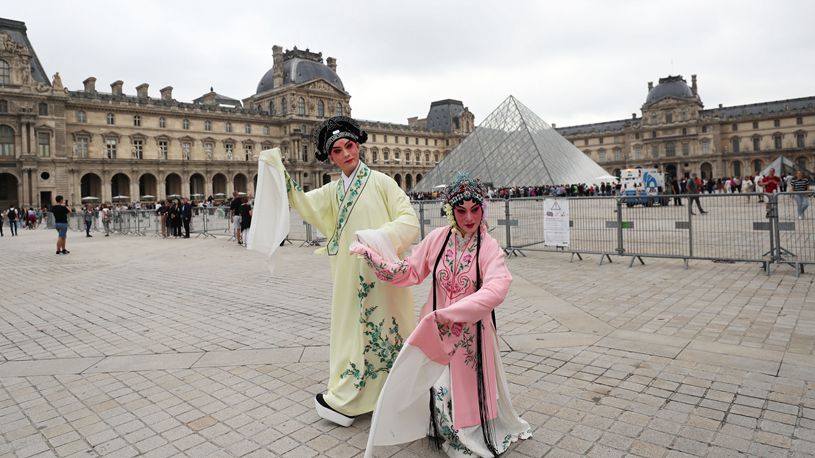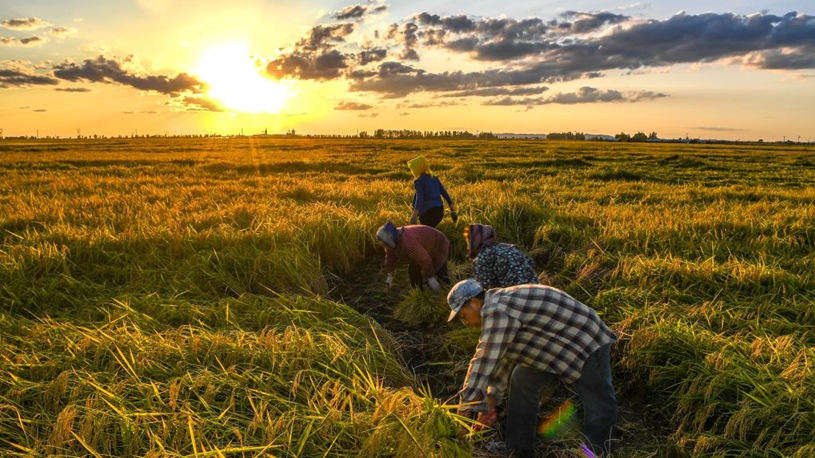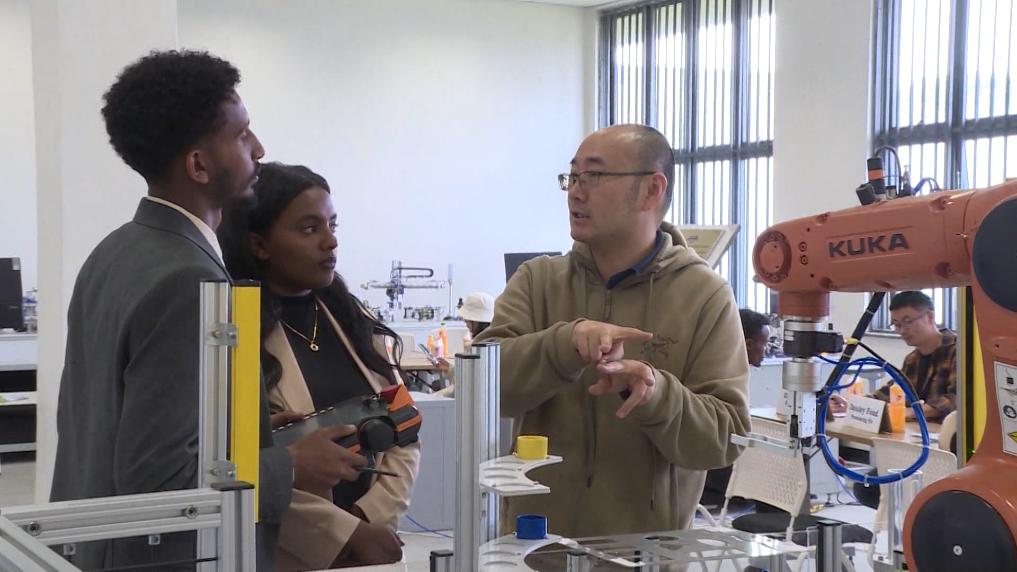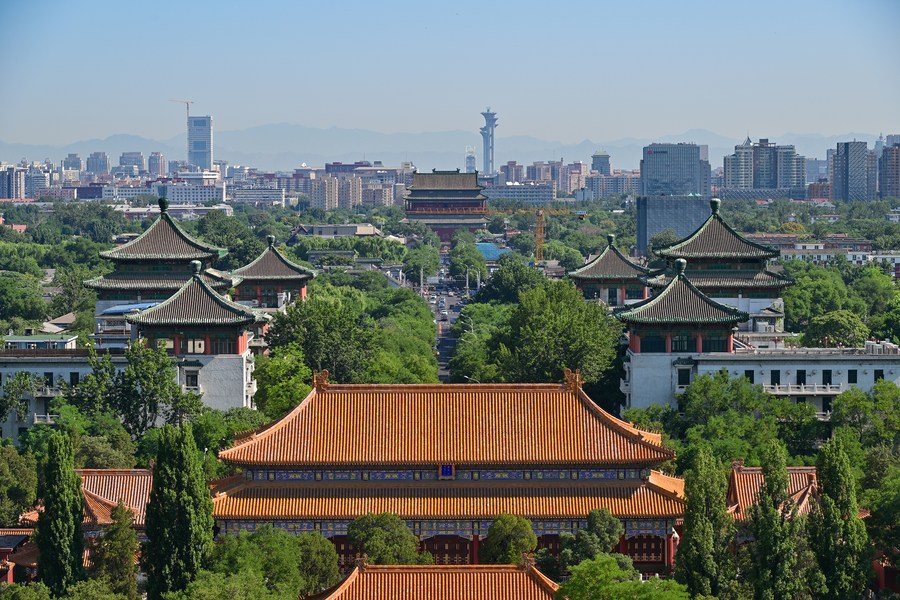
This photo taken on June 21, 2023 shows the Drum Tower as seen from the Jingshan Park in Beijing, capital of China. (Xinhua/Li Xin)
BEIJING, Sept. 17 (Xinhua) -- Located near Beijing's Central Axis, the Altar of the God of Agriculture stands as a testament to China's rich farming culture. At a small farm field in this temple, emperors once attended solemn rituals to offer sacrifices to the God of Agriculture, praying for favorable weather, bountiful harvests, and prosperity for all.
Today, this sacred space has transformed into a hub of enlightenment, where throngs of eager students immerse themselves in the rich tapestry of China's agricultural heritage.
Public cultural activities such as spring planting and autumn harvesting have been held regularly in the temple since 2018. Secluded for more than 200 years, The Divine Granary Complex which was used for storing grains harvested from the ceremonial field has also been renovated and opened to the public.
"In the future, we will use modern exhibition methods to systematically explain the historical changes and cultural connotations of the Divine Granary Complex, bringing these time-honored architectures closer to the public," said Zhang Min, a staffer at the Beijing Ancient Architecture Museum.
Beijing has a history of over 3,000 years, and boasts a history of 870 years as a capital, making it a treasure trove of cultural heritage. The Central Axis is the best-preserved core area of the old city of Beijing. It extends 7.8 km from the Yongding Gate in the south to the Drum Tower and Bell Tower in the north. Most of the essential buildings in the old city of Beijing are constructed along the axis.
The Altar of the God of Agriculture, located on the west side of the southern section of Beijing's Central Axis, is a microcosm of the city's efforts to preserve this heritage.
In 2011, Beijing launched a campaign to have the Central Axis of Beijing inscribed on the UNESCO World Heritage List. Over the years, Beijing has empowered the protection and revitalization of the Central Axis cultural heritage to revitalize the entire old city.
Dotted along the Central Axis is Qianmen, which has been a bustling commercial district since the Qing Dynasty (1644-1911). Today, the area still retains its ancient charm with winding hutong alleyways, attracting tourists and locals alike.
The preservation efforts for the Central Axis have facilitated orderly renovations within the old city, safeguarding its distinctive character. The street and lane layout and traditional features are preserved while the living environment for local residents has been improved. Some traditional guild halls and homes of famous figures in the old city have also been gradually opened to the public after renovation.
All these efforts have led to a vibrant cultural atmosphere where visitors can experience history and modernity simultaneously, passing on the enduring spirit of China's rich heritage.
Tianleyuan Theater in the Qianmen area, which boasts a history of more than 200 years, offers visitors experiences themed around Peking Opera but infused with modern elements.
Stage art and lighting are introduced during the performance while screens showcasing Chinese and English subtitles are added to attract foreign audiences. The performances have also introduced immersive and interactive elements to appeal to younger crowds. This summer, the number of visitors to Tianleyuan has returned to the pre-epidemic level.
"Audiences can wear the opera costumes to take photos and watch performances, enjoying a more immersive experience," said Ma, who works at the theater. "Children can learn a lot about Peking Opera through interaction with actors and can really feel the charm of traditional Chinese culture."
According to a report on the Central Axis published in April, with the growing public interest in Beijing's Central Axis, there has been a substantial rise in the attention and support from Beijing residents for its UNESCO World Heritage nomination.
"More and more people are exploring these sites, tapping into the city's past and recognizing its identity," said Chen Pinxiang, an expert from the Beijing Institute of Surveying and Mapping, who specializes in creating a three-dimensional digital profile for heritage sites along the Central Axis. ■

